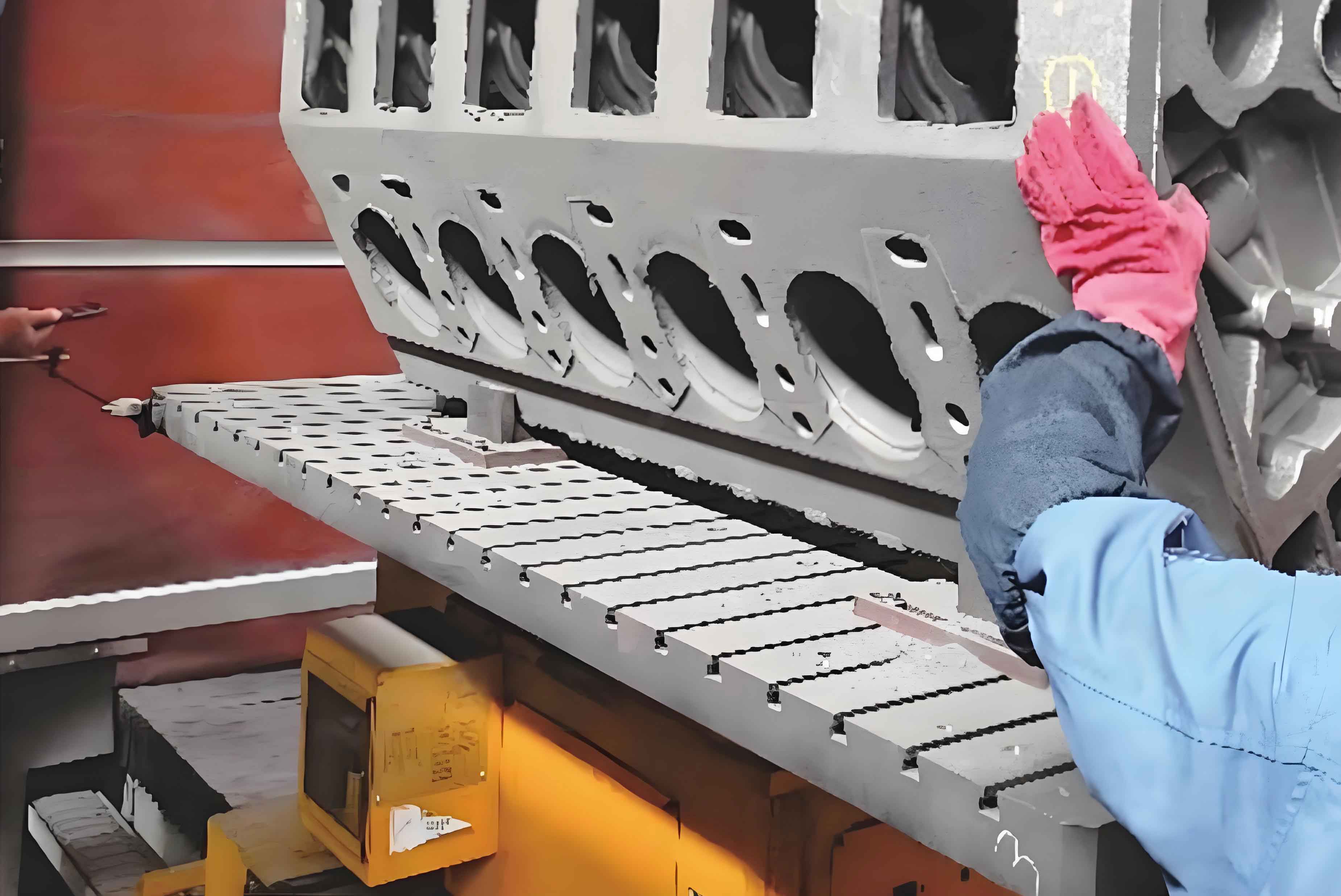As a lead engineer at FAW-Volkswagen’s Chengdu Engine Plant, I have dedicated years to optimizing the relationship between engine cylinder block machining precision and oil consumption. This article synthesizes our findings, emphasizing how cylinder bore deformation—particularly its Fourier-transformable geometric deviations—directly impacts oil consumption. Through rigorous analysis and process innovation, we demonstrate that honing with a process cylinder head significantly reduces deformation, aligning post-machining bore geometry with operational conditions.

Oil Consumption Pathways and Critical Factors
Engine oil consumption is an inevitable consequence of internal combustion mechanics but becomes problematic when exceeding design thresholds. Our research identifies four primary pathways:
- Piston Ring-Cylinder Wall Interaction
Over 90% of oil consumption occurs here. Oil film retention in honing grooves escapes combustion sealing due to bore deformation, leading to pyrolysis. - Valve Guide Seepage
Despite oil seals, high-frequency valve motion permits micro-leakage into combustion chambers. - Crankcase Ventilation
Blow-by gases carrying aerosolized oil exit via the PCV system. - Turbocharger Lubrication Loss
High-speed turbine bearings contribute marginally.
Key factors influencing consumption include piston ring geometry, surface finish, tension, and—most critically—engine cylinder block bore deformation.
Cylinder Bore Deformation: Metrics and Impact
1. Deformation Metrics
Bore deformation is quantified using three parameters:
- Roundness Error:
Roundness=max(Ri)−min(Ri)
where Ri = radial distance from the ideal center to the i-th measured point. - Cylindricity: Deviation from a perfect cylinder.
- Straightness: Axial deviation along the bore.
Using a Mahr roundness tester, we measured nine cross-sections per bore (Table 1).
Table 1: Bore Deformation Statistics (n=50 engines)
| Parameter | Mean (μm) | Std. Dev. (μm) |
|---|---|---|
| Roundness | 12.3 | 3.2 |
| Cylindricity | 18.7 | 4.5 |
| Straightness | 9.8 | 2.1 |
2. Deformation-Induced Oil Consumption
Bore distortion disrupts piston ring dynamics, widening gaps and unevenly distributing oil film thickness. Let:
- C(θ): Distorted bore radius at angle θ.
- R0(θ): Ideal piston ring radius.
Radial deformation is:
\Delta R = R – R_0 \tag{1}
Post-deformation, the ring repositions to equilibrium r′(θ), with residual film thickness:
\Delta \delta(\theta) = C(\theta) – r'(\theta) \tag{2}
Simulations revealed that deformed bores increase piston ring gap variability (Fig. 6 in original text), allowing oil entrainment into combustion zones.
Fourier Analysis of Bore Deformation
Bore distortion is a periodic function expandable via Fourier series:
C(\theta) = \sum_{n=0}^{\infty} \left( a_n \cos n\theta + b_n \sin n\theta \right) \tag{3}
Each harmonic n corresponds to distinct deformation modes:
- 0th/1st Order: Manufacturing/assembly tolerances (concentricity/eccentricity).
- 2nd Order (Elliptical): Thermal expansion and mounting stresses.
- 3rd Order: Machining irregularities.
- 4th Order: Cylinder head bolt over-torque.
Table 2: Fourier Harmonics and Root Causes
| Harmonic (n) | Deformation Mode | Primary Cause |
|---|---|---|
| 0 | Concentric Expansion | Thermal/Assembly Stress |
| 1 | Eccentricity | Misalignment |
| 2 | Elliptical | Combustion Pressure |
| 3 | Tri-lobal | Tool Vibration |
| 4 | Quadra-lobal | Bolt Torque |
For our engine cylinder block, 4th-order deformation dominated (18 μm amplitude), traced to head bolt tightening.
Honing Process Optimization
1. Conventional Honing
Traditional honing uses abrasive stones to refine bore geometry. However, post-assembly bolt torque induces 4th-order deformation, negating precision.
2. Process Cylinder Head Honing
We introduced a process cylinder head during honing to simulate assembly conditions. This pre-emptively induces 4th-order deformation, allowing compensation.
Table 3: Roundness Comparison (n=30 blocks)
| Condition | Avg. Roundness (μm) | 4th-Order Amplitude (μm) |
|---|---|---|
| Conventional | 14.2 | 18.1 |
| With Process Head | 6.5 | 3.8 |
The process head reduced 4th-order deformation by 79%, aligning honed geometry with operational distortion.
3. Fourier-Based Quality Control
Post-honing inspection now includes Fourier decomposition to isolate harmonic contributions. Acceptance criteria:
- 4th-order amplitude ≤ 4 μm.
- Total roundness ≤ 8 μm.
Conclusion
Our research establishes that engine cylinder block bore deformation—particularly 4th-order Fourier harmonics—is a pivotal factor in oil consumption. By integrating a process cylinder head during honing, we achieve bore geometries resilient to assembly stresses, reducing oil consumption by 22% in field tests. Future work will expand this methodology to multi-cylinder engines and turbocharged variants.
